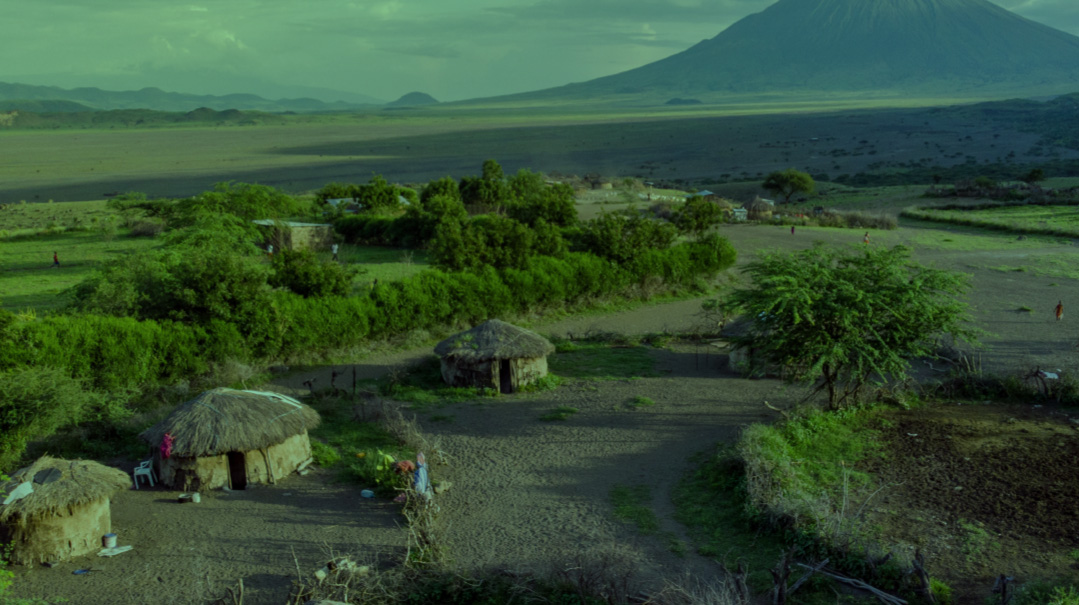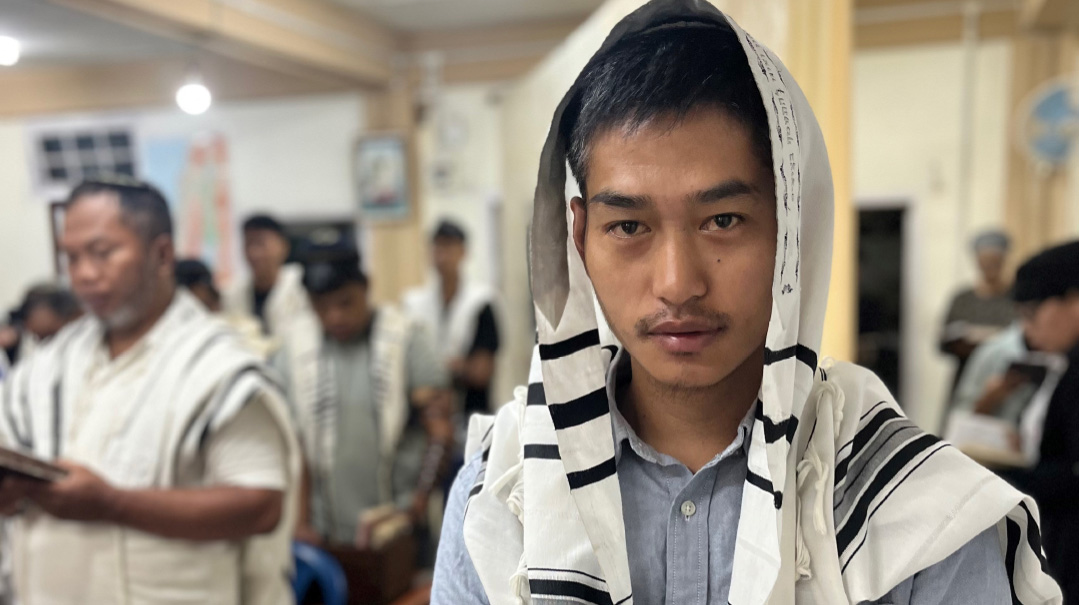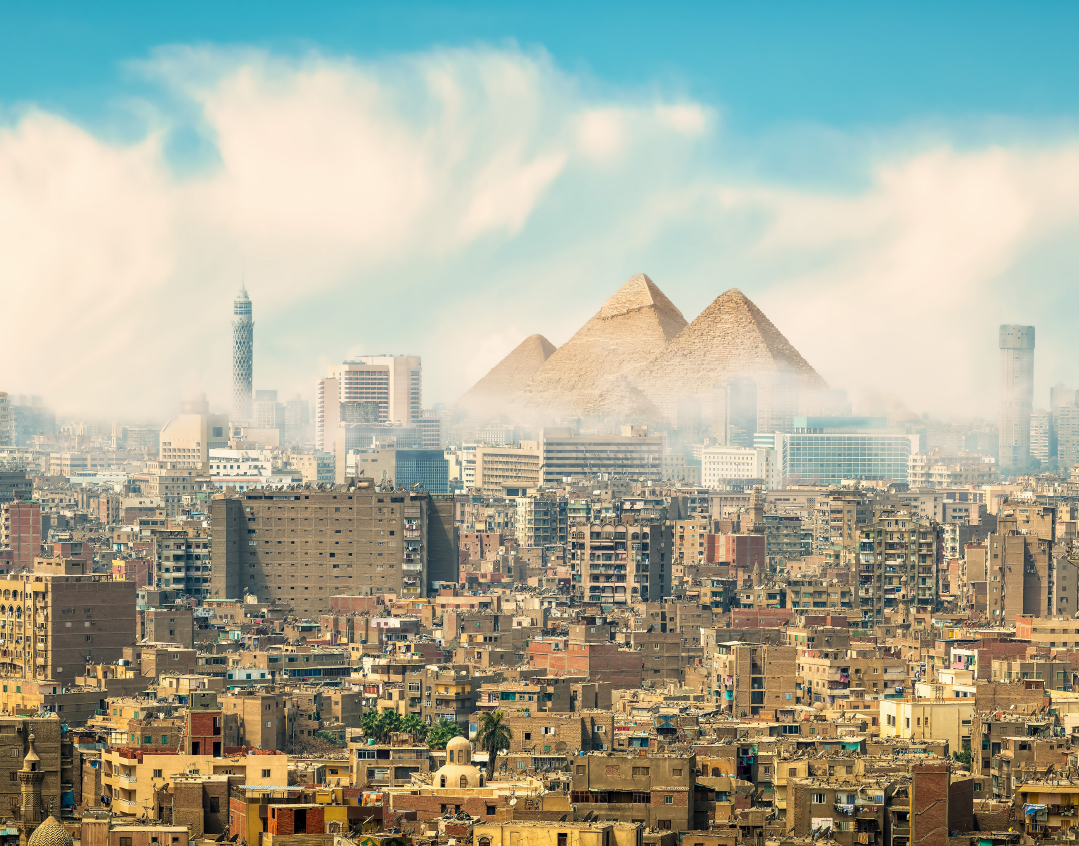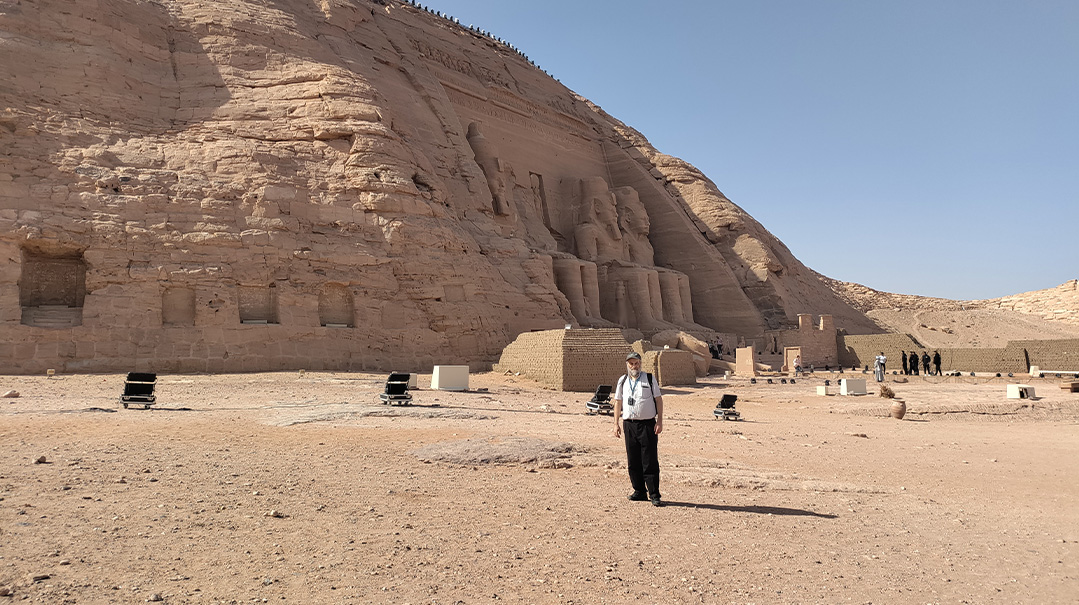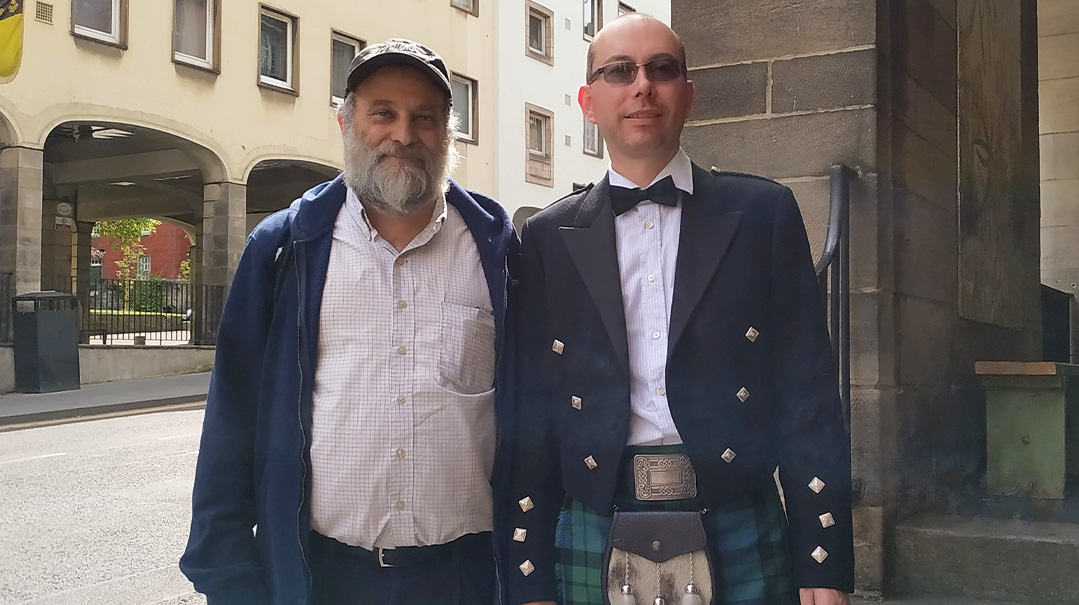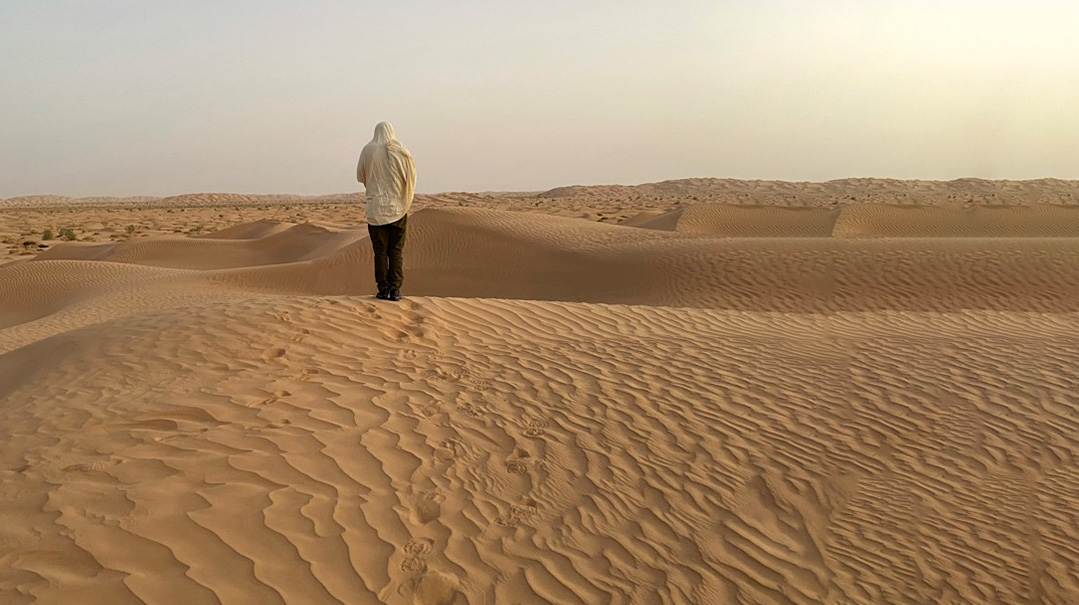False Messiahs, True Saviors
| March 22, 2022Although Judaism was buried for decades, Albania was a Holocaust haven: They refused to turn over a single Jew
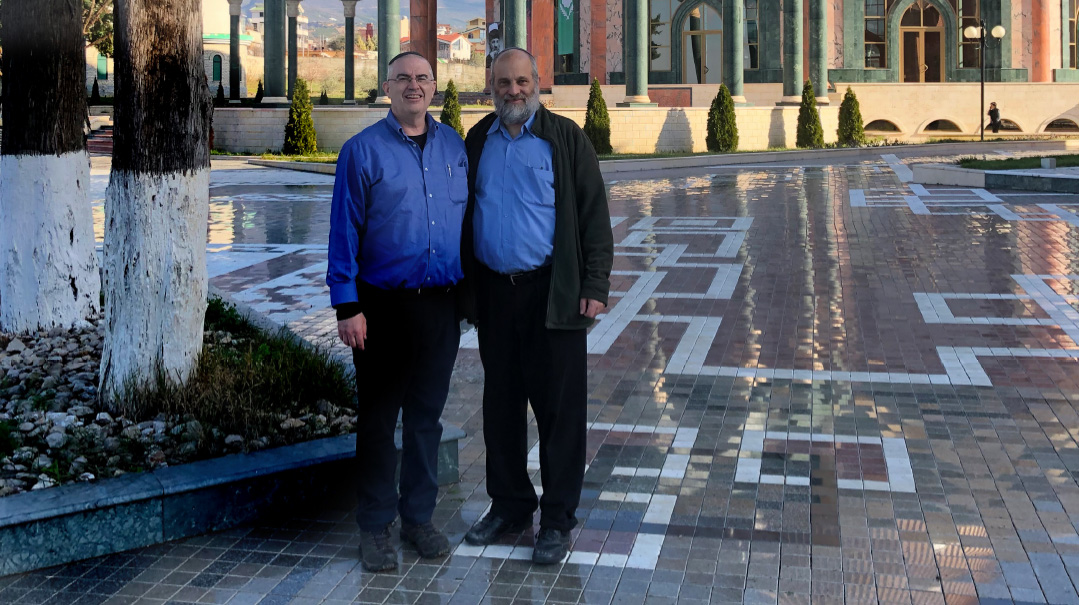
When we were invited to do a bris in Albania, it was more than an eighth-day ritual — it was a first in decades, as the Communist regime had banned all religious practices over 70 years ago, essentially wiping out every vestige of Judaism. But it was also a paying back of dues — because although Judaism was buried for decades, Albania was a Holocaust haven: They refused to turn over a single Jew
While we hadn’t been doing much traveling since the onset of Covid, we couldn’t resist the offer to fly to Albania to do a bris, likely the first one in the country in at least 70 years. Albania, a small Balkan country with a long coastline on the Adriatic Sea, suffered under an extreme totalitarian form of Communism for nearly half a century, when all religions and religious practices were banned. And although there are only a few dozen Jews in the country, we were feted by locals who were acutely aware and proud that their families and friends had saved the entire Jewish community plus hundreds of refugees during World War II. For us, and for the few remaining Jews, the unlikely bris was a sign of renewal.
The happy father who brought us all the way to Albania is a fellow named Baruch, whom Ari G. befriended around 20 years ago when Baruch was a high school student. The two began to learn together, stayed in touch over the years, and eventually Baruch picked up and moved to Albania for business opportunities. When Baruch called Ari with the good news of a baby boy and an invitation to do the bris, we couldn’t refuse.
We were in touch with Rabbi Yoel Kaplan, the dynamic Chabad shaliach, and arranged to be with him for Shabbos. About two decades ago, Rabbi Kaplan came to Salonika in neighboring Greece as the Chabad emissary, and seeing that nearby Albania and Montenegro had no organized Jewish community or shul, made it his business about 12 years ago to establish them. (His wife and children live in Eretz Yisrael, while he travels regularly, having his brother Rabbi Yosef Kaplan manage the Chabad center in Salonika.)
The few remaining members of the Albanian Jewish community number under 50, are either intermarried or not halachically Jewish, and the tiny community associated with Chabad, which includes some locals, Israeli businessmen, and other assorted folks such as an adventurous, young frum New Yorker, doesn’t always have a minyan for Shabbos. The Shabbos we were there, we joined with Baruch and his local family and some relatives from Israel — and so it was with a sense of history and destiny that we found ourselves with a small group of Jews having the very first minyan in the new Chabad shul and celebrating the first bris in so many decades.
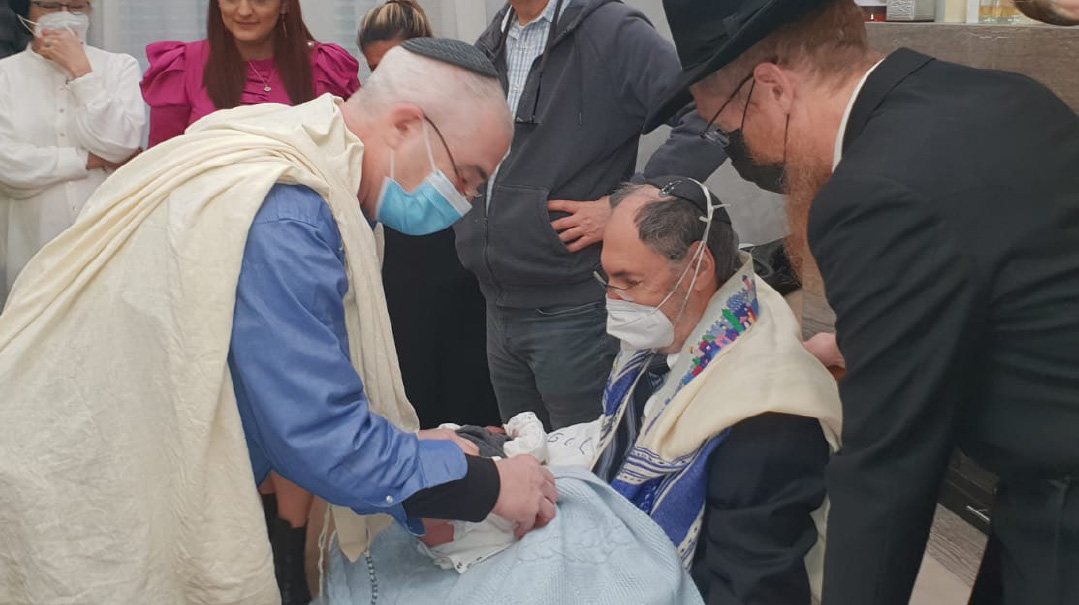
Ari G. is always thrilled to bring a new Jew into the Covenant. For Albania’s few remaining Jews, this unlikely bris was a sign of renewal
Reminders of the Past
Of all the Communist countries, Albania, under the incomparable repressive dictatorship of Enver Hoxha for over 40 years, was unquestionably the harshest and most isolated of all Communist regimes. It was also the poorest country in Europe. Yet there was no anti-Semitism per se, as all religion was banned: Churches, mosques, and synagogues were destroyed, foreign travel was forbidden, and any perceived resistance was met with severe consequences. At some point it became forbidden to practice any religious rite on punishment of death, and several Jews who tried to escape the country in the early 1950s were shot and killed. One Jewish man we met told us he remembered his grandmother secretly lighting Shabbos candles, knowing that death awaited her had she been discovered.
Change began in the early 1990s, but even now, 30 years later, the scars are still evident, and people are eager to share their traumatic stories. We were told how, shortly after Stalin’s death in 1953, Albania left the Soviet and Chinese Communist orbits because they perceived the Soviets and Chinese as having lost their way of pure Communism and of being too liberal. Another person told us about a friend’s father who was sentenced to 20 years in jail. Due to the appalling conditions, the man died after five years of incarceration, yet the authorities insisted that the man needed to “complete his sentence” and would not release the body for another 15 years. Even then, the family had to pay to get the body back.
Despite this history, people today feel comfortable with their freedoms, and the market economy seems to be flourishing. Still, physical reminders of the dark past are seen in the cities as well as along the countryside roads: There are literally hundreds of thousands of concrete anti-tank bunkers dotting the landscape. As we drove down the coast, we were even able to see the “sub pens,” tunnels from the sea dug into the sides of a mountain to secretly house Soviet submarines away from satellite sensors.
The majority of Jews who still identified as Jews following Communism were airlifted out to Israel in 1991, although some did eventually return, including the past president of the local community whom we met. He is a Romaniote Jew who became a teacher in Israel, but now owns a chain of stores in Albania.
We also met a special man named Solomon Pirra Sokol, one of Albania’s last remaining Jewish locals. Solomon was born in Albania to Jewish parents, but like all native Albanian Jews of his generation, he had been brought up completely non-religious and ignorant of Judaism. After Communism, he used his considerable talents to start a business. He had studied law and architecture, but it was his grandfather who taught him the art of fine jewelry making. He has the premier jewelry shop in the capital city of Tirana, and as someone proud of Israel and of his Judaism, he even displays large Magen Davids and Hebrew signs on the outside of his store.
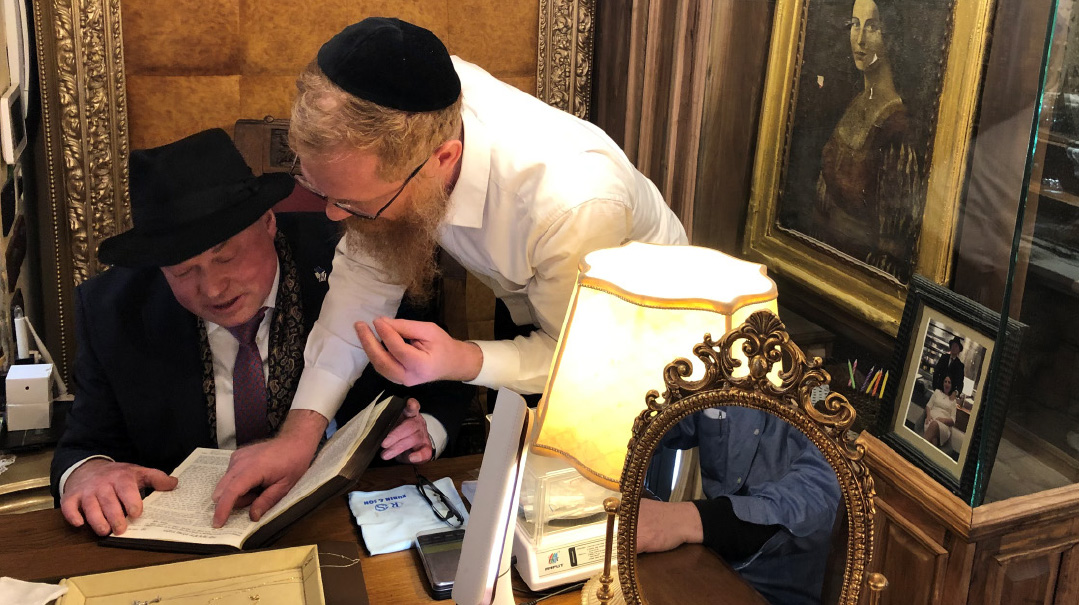
Solomon, one of Albania’s last remaining Jews, was raised completely ignorant of his heritage, yet today he’s bursting with Jewish pride and is Rabbi Kaplan’s most enthusiastic talmid
And he was also the first local Jew Rabbi Kaplan met, with a warm relationship ensuing. Yet two years ago tragedy struck. There was a gas leak in the basement of his atelier, causing a huge explosion that destroyed the entire store. His wife was in the shop at the time, and Solomon ran in to save her — but she tragically died, and he was badly burned. He’s still heartbroken. But that hasn’t stopped him from learning Torah regularly with Rabbi Kaplan. In fact, we saw a Mishnah Berurah on his desk in his exquisitely rebuilt jewelry store. Solomon gives of his money and his time to Jewish causes, and recently donated a handmade wood-sculpted aron kodesh to the shul.
Despite the small crowd, Rav Yoel runs a Shabbos that makes you want to return for another Shabbos. The meals, which he prepares singlehandedly, are impressive in their quantity, variety, and presentation. And the singing, dancing, and divrei Torah were almost like being at a rebbe’s tish. He noted that missing was his assistant, Rabbi Yisroel Finman, who was in the US at the time, but lives and teaches Torah full-time in Albania.
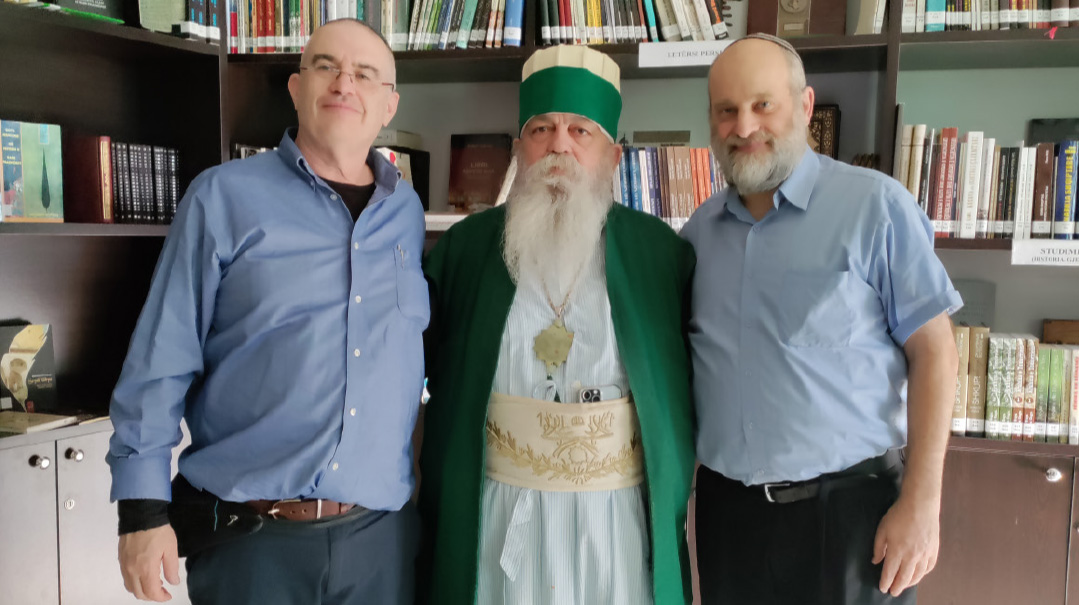
We didn’t think it would be proper to refuse a blessing from the Baba Mondi, and anyway, how could it hurt?
A Blessing on Your Head
While the Communist Party banned all religious activity in the country, rendering all religion illegal, today the population identifies as about 70 percent Muslim, 20 percent Orthodox Christian, and 10 percent Catholic, although most are not religious. We were therefore surprised to discover that the capital city of Tirana is the world center for an Islamic Sufistic movement known as Bektashi. Sufism is a spiritual, contemplative inward-looking form of Islam, very different from our usual perception of the religion. It is peaceful, and modern-day adherents are peace-loving and accepting. It’s no wonder that the Muslim fundamentalists hate them. ISIS even debated whether it was permissible according to Islamic law to kill them as apostates.
Rabbi Kaplan has become friendly with the leadership of the Bektashi, and asked us if we’d be interested in a sit-down with the Baba Mondi, the leader of the millions of Bektashi Muslims worldwide. Never ones to pass up such an opportunity, we of course agreed, and immediately after the bris found ourselves on the way to meet the leader of the Bektashi Order.
After a security check at the gate of the mosque compound, we were greeted by the assistant to the Baba Mondi — sort of like the rebbe’s shamash, l’havdil. He and Rabbi Kaplan know each other well and embraced warmly. They reminisced about how the IDF home front engineers came to help after the 2019 Albanian earthquake, and how, at the request of the Baba Mondi, Rabbi Kaplan helped arrange for an Israeli team to evaluate the damage and shore up their main mosque.
We were escorted to the official museum of the Bektashi Order. At the entranceway of the building, we passed the Baba Mondi as he was giving a blessing to a couple and their young daughter, to whom he then gave some treats. It was pretty clear to us that he is a warm leader who takes a personal interest in his followers. Upon entering the large museum hall, we were amazed to see front and center a picture of a sefer Torah. We were told that the Bektashi accept the authority and lessons of the Torah as part of their belief. We were then escorted into the Baba Mondi’s reception room, where he was seated at the head of a table laden with fruits, nuts, and drinks — and a bottle of arak. They have a less rigid interpretation of the Koran, allowing alcohol and permitting women to go out without a veil.
Together with his translator and three assistants, we engaged in a lively discussion about Judaism, Israel, and their version of Islam. Bektashism was founded in the 16th century in what is today modern Turkey, but they moved their headquarters to Albania about 100 years ago to escape persecution, and somehow managed to survive the Communist-era no-religion mandate. They have millions of followers, with the largest number in Albania (but also quite a few in the US, mostly concentrated in the Detroit area). As we stood up to leave, the Baba Mondi looked at us for a few seconds, obviously contemplating the next question — and then asked us if we would like a blessing from him. It seemed rude to refuse… and who knows? So, while holding one hand over our head and clasping our hands with his other, he requested our mother’s name and quietly gave us a long blessing in a foreign language. We hope it was something good.
If They Go, We Go
In addition to the fact that there is no noticeable anti-Semitism in Albania, it was also a pleasure to visit a country that saved Jews during the Holocaust and are still proud of it. Beginning in 1933, Jewish refugees arrived in Albania, and along with the approximately 200 local Jews, were protected, even by the occupying Italians. Ten years later, when the Germans took over the country, they requested a list of all Jews in Albania. The interior minister, backed by his nation, refused. And again, in the spring of 1944, the Germans asked the regency for the list, adding that all the Jews be gathered in one place. The minister refused again.
We were struck by the fact that so many other European countries we’ve visited abound with Stolpersteine, plaques, Holocaust memorials, and monuments to the deported, murdered Jews. In Albania, however, there are no such physical reminders of the Holocaust because there were no deportations. Instead of monuments, there are the descendants of the rescuers — and wherever we went, they wanted to share their national history of rescue: how police gave the Jews blank identity cards and how individuals provided shelter and food, without taking any money for hiding Jews.
But because of Albania’s total isolation under Communism, the first application from Albania to Yad Vashem’s Righteous Among the Nations was not until 1987. After a survivor described his story and rescue by the Albanians, he concluded his personal testimony with an emphatic, grateful statement: “The Albanians are simple people, but very kindhearted, warm, and humane. They may not have been educated on the heritage of Goethe and Schiller, but they attach the greatest importance to human life in a most natural and unquestioning way. In those dark days when Jewish life in Europe didn’t count much, Albanians protected the Jews with love, dedication, and sacrifice.”
Today, there are 75 Albanians recognized as “Righteous Among the Nations,” primarily Muslims who rescued Jews from outside the country seeking refuge in Albania at the beginning of the 1940s.
In several of the testimonies to Yad Vashem, grateful survivors used the term “besa.” As one of them explained: “There is an Albanian word ‘besa’ which means ‘word of honor.’ There is nothing holier for an Albanian than his besa. When he gives it, he’ll go through hell and fire, but he’ll keep his word of honor. Besa was the key that saved the Jews.”
In addition, there is a 15th century code of laws known as kanun, which includes unconditional hospitality and protection of guests. This became national policy when the Albanians refused to hand over the list of Jews in their country. A former president of the tiny Jewish community told us about a local family who was sheltering Jews. When the Nazis came looking for the Jews, they were hustled upstairs, and when those Nazis demanded the Jews be sent out, their Muslim host sent out his own son as a message: “If you take the Jews, you’ll need to take every one of us.”
Albania is likely the only country in Europe that ended the war with more Jews than when it started. Albanians encourage Israelis, and Jews the world over, to become educated about their country’s exemplary behavior during the war. And for us, it gave added value to Jewish tourism in Albania. We found it a pleasant change, knowing that the land on which we were walking wasn’t saturated with Jewish blood.
Search Among the Ruins
While the first Jews probably arrived in Albania after the destruction of the Second Beis Hamikdash as prisoners on Roman ships that washed up on the country’s coastline, not much is known about those early centuries. Yet despite its endurance for nearly two thousand years, the small size of the community, coupled with the radical nature of the Albanian Communist regime, ensured the almost complete annihilation of any trace of Judaism or of Jewish artifacts — ironically, something the Nazis couldn’t accomplish. While the Soviet Union itself believed in maintaining a “pressure relief valve,” leaving open a few shuls and allowing some mitzvos such as matzah baking, Albania had a zero-tolerance policy. They destroyed every religious house of worship, including all shuls and even some cemeteries, and the state-enforced atheism was absolute. But all that didn’t deter our search. We know that cemeteries usually survive the end of the Jewish community, yet in Albania, we were unable to find any Jewish cemeteries. It seemed that until 1967, Jews were buried in a section of a Muslim cemetery, except in the city of Vlore, where there was an ancient Jewish cemetery dating back to the ninth century. But with the government having destroyed so much when all religion was banned, we didn’t have too much hope.
One place we hoped to find some Jewish remains was in the city of Vlore. In the 15th and 16th centuries, Jews reportedly made up a third of the city’s population, and in the last century it became the center of the small Albanian Jewish community. The main shul had been destroyed, but there was still a street prominently named Rruga Hebrenjtë (“Jew Street”) that we readily found. We also discovered a school building that we were told had once been a shul. We convinced the director of the school to meet with us and explain the history of the building — but he didn’t think it had been a synagogue. He was pretty sure it was a large house of a wealthy local Jew. In 1945 the state nationalized it, in 1994 the Jewish owners repossessed it, in 1997 it was severely damaged in a fire, and in 1999 it was rebuilt. The director told us that since 2000 the school has used the building and pays rent to the families of the Jewish owners (who have very Jewish-sounding names.)
According to our research, the last shul in Albania had been accidentally destroyed in World War I, and makeshift shuls were then established in the large houses owned by some wealthy Jews. Based on other evidence, it seemed likely that this building indeed had housed a shul for the last decades of the Vlore Jewish community. And not far from Jew Street is an archeology museum that contains a piece of a tombstone with Hebrew writing that was supposedly several centuries old.
Another stop in the search for Jewish sites was Berat, a picturesque old town set on a mountainside on a meandering river, famous for its many houses with large windows. It was the center of Jewish life in the 17th and 18th centuries, and a few Jews remained in the 20th century. Here too we easily found a “Jew Street” as well as a one-room Jewish museum. Run by the widow of the Muslim man who created it, when she heard we would get there only after it was supposed to be closed, she kept it open until we arrived. The displays, portraying the story of the local Jews as well as the rescue of the Jews during World War II, were clearly a labor of love by a man who wished there were still Jews in Berat. Over 600 Jews were sheltered in Berat by at least 63 local families, and not one Jew was handed over to the Nazis.
There are not many, if any, famous Jews or Jewish books from Albania. But there is one infamous Jew associated with the country — Shabtai Tzvi, the disgraced false messiah who caused such terrible disillusionment to so many Jews. He was banished by the Ottoman sultan in 1673 to Ulcinj, today in southern Montenegro, just north of the border from Albania. In August 1676, he wrote to the Jewish community in Berat requesting religious books, but died shortly thereafter. What happened to his body is a mystery. Some Albanian scholars claim he died not in Ulcinj but in the southern Albanian village of Fterrë and was buried on a nearby hill, and that many of the villagers today are descendants of his followers. Yitzchak Ben Zvi, Israel’s first president who was also a prominent historian with a special interest in small, dispersed Jewish communities, believed that he died in Berat and that his grave is on the periphery of the town in a place called Varri i Çifutit (Tomb of the Jew). One Jewish man we met in Tirana told us that growing up in Berat, the “Tomb of the Jew” was a popular landmark. Kabbalah scholar Gershom Scholem believed he died and was buried in Ulcinj. Fortified with these theories, we set out to find his grave.
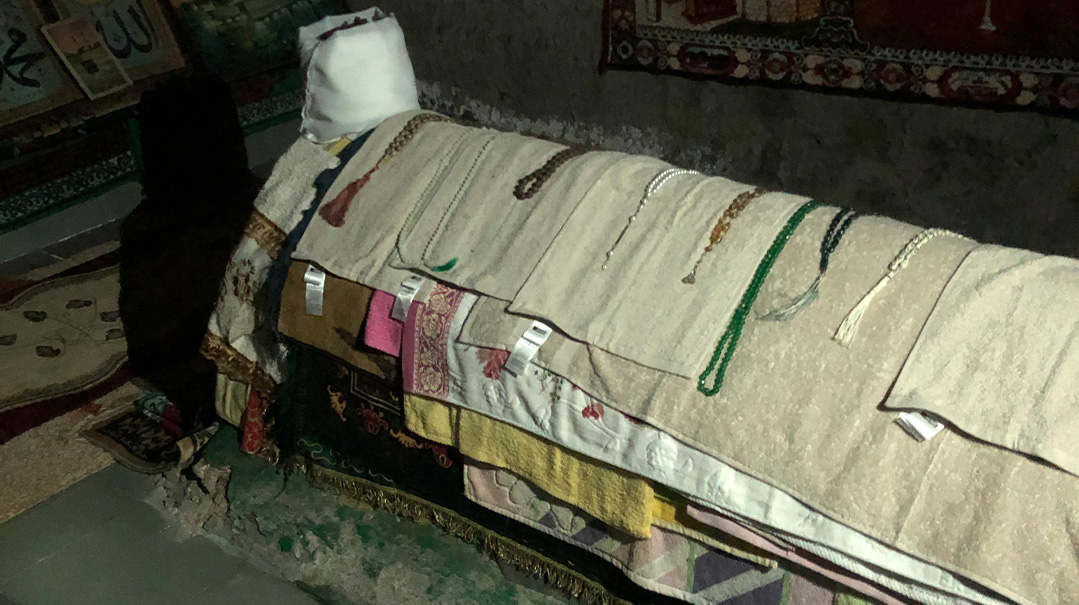
Secret to the Grave
From the capital city of Tirana, we hopped into a car and drove for three hours looking for the ancient town called Ulcinj, once part of Albania, now in the small country of Montenegro. (The border crossing was nothing to speak of and no Covid questions were asked.) A tiny roadway snaked through the hills bringing us down to the coast and to the village.
We had arranged with a local Muslim woman who spoke English to help us in our quest. Ulcinj is one of the oldest towns on the Adriatic coast, dating from the 5th century BCE. Our host told us her husband’s family has been living there for at least 800 years. We heard there were two Magen Davids on the second floor of an old municipal building, but we weren’t able to see it, as it was locked.
We were disappointed about that, but quite excited when she told us that she lived in an ancient building across the street from the supposed grave.
One of the hallmarks of even modern believers in Shabtai Tzvi is secrecy about anything relating to him. In fact, we had met Sabbatians in Turkey who told us that one of the tenets of their belief is to never admit to believing in Shabtai Tzvi. She told us, “the Muslims who have watched the grave for generations are strange. They are very secretive and do not let people into the tomb who are not Muslims known to them.” Now we felt the electricity of discovery at hand. We knocked at the door of the modern house adjacent to the tomb building, and a little girl answered. Her young mom came and told us that she could not let us into the tomb as they do not have the key to open it up. We stressed how important it was for us to see this grave and that we had come directly from Israel. She saw our yarmulkes, gave a sigh, and went back inside to bring out her mother, an old Muslim woman who was dressed in an old-fashioned skirt and head covering. Through our translator, she also said it could not be opened, it was late, and in any event, they did not have the key.
Finally, remembering that a follower of Shabtai Tzvi would never admit to being a believer, Ari G. said to her, “This is very important for my family. While I certainly do not believe in him, I know people who do.” She stared hard at us for a moment and without a word, turned around, and after two minutes came back with a huge, ancient key. She walked us to the tomb, inside a squat building made of stones with no electricity. She said when good or bad things happened to “certain Muslims,” they come to the grave and give charity. We left thinking that this was indeed the final resting place of the ignoble and arch-apostate of the Jewish people who brought so much misery upon us.
While our visit to the secret tomb in Ulcinj was evidence enough for us, we decided to unearth every other lead as well. Ben Zvi had a letter testifying that Shabtai Tzvi was actually in Berat at the end of his life, and also cited reliable reports from the early 20th century of people who visited the “grave of the Jewish messiah” near Berat. The small Jewish museum in Berat describes the tomb as being in the village of Bilça, three kilometers from the museum. With this limited information, we again set out on a wild tomb chase. We asked the clerk in our hotel in Berat for the “Tomb of the Jew.” But instead of directing us to that village, he took us by foot to a nearby courtyard with a Bektashi mosque, some historic buildings, and a tomb. He insisted that that tomb belonged to Shabtai Tzvi, and then passed us off to a Muslim cleric who told us the tomb was actually in the back locked room of the Bektashi mosque. Not convinced, we headed out by car on some muddy dirt roads to search for Bilça, which we eventually found, but were directed toward their local cemetery. An unemployed young man then hopped in the car and directed us toward what he claimed was a destroyed cemetery that had once housed the “Tomb of the Jew.” We left pretty convinced we had not found the tomb that Ben Zvi had described, although we could imagine Shabtai Tzvi’s followers wandering in those small country villages in order to visit the tomb of their deceased messiah.
Shabtai Tzvi attracted interest by all Jews who passed through Albania. Even the US ambassador in the 1930s, a Jew named Herman Bernstein, did his own investigation. He believed that Shabtai Tzvi was buried in the area of Berat, as some references indicate that the tomb in Berat eventually became a shrine for the Bektashis. In fact, there is evidence that until 1965 the Bektashis would make pilgrimages to the tomb.
Bernstein didn’t find the tomb, but in the process of his research, he stumbled upon an unrelated but important German document from the year 1611, regarding the Jews of Albania, that read: “… many of these places are inhabited by Jews who had gone to Albania from Ancona [Italy] during the period of Pope Paul IV, who intensified the Inquisition.”
Take the Floor
Saranda is the southernmost city in Albania, and while the mountain drive through hairpin turns is stunning, what interested us most is an archaeological site right in the center of the city. It’s the remains of a large fifth-century C.E. synagogue, and we were graciously provided with a private early-morning sunrise tour (we were on our way to catching the ferry to Corfu, the Greek island visible in the distance). Saranda in its present incarnation is a relatively new city, and the archeological site that is today in the center of the busy city was once on its outskirts. The initial excavations were started in 1984 under Communist rule, but then it was not recognized as a Jewish site — and fortunately, the mosaic floor and other remains of the synagogue were buried under several meters of dirt and rubble, far away from the destructive tentacles of the Communists. In 2004, a joint Albanian-Hebrew University excavation, together with famed archeologist Ehud Netzer, revealed the synagogue in all its ancient glory — although it is now covered with a layer of dirt in order to preserve it.
It was already known that there was a Jewish community in the area at that time, after a Hebrew/Latin tombstone from the year 521 was discovered in Venosa (southern Italy) for a 20-year-old woman whose father, Yishai, was the head of the community in Anchiasmos, the Byzantine name for Saranda. But finding a shul with an exquisite mosaic laden with Jewish symbols points to a much more significant community than had been presumed. (The site also includes two water cisterns, although the absence of steps makes it unlikely that it was a mikveh.)
While standing in the ruins of the 1500-year-old synagogue, we realized we were standing above the mosaic that Jews had stood on all those years ago in a vibrant community that had renewed itself after Jerusalem’s devastating destruction. We tried to envision in which direction they would have davened, and we recited a short tefillah, possibly in the same spot as Yishai did 1600 years ago as he too prayed for Redemption.
(Originally featured in Mishpacha, Issue 904)
Oops! We could not locate your form.

